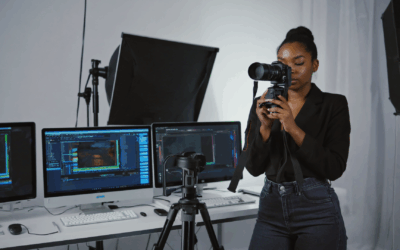Introduction
Long exposure photography is a captivating technique that allows photographers to create stunning images by capturing motion over extended periods. This method is particularly appealing when photographing water scenes, as it transforms flowing rivers, crashing waves and tranquil lakes into ethereal visuals that often evoke a sense of serenity and drama. To achieve breathtaking long exposure water photography, understanding the right techniques and settings is crucial. In this comprehensive guide, we will explore the ins and outs of long exposure photography specifically for water scenes.
Understanding Long Exposure Photography
What is Long Exposure Photography?
Long exposure photography involves using a slow shutter speed to capture the movement of elements within a scene over time. Unlike standard photography—which typically freezes motion—long exposure allows light to accumulate on the camera sensor, resulting in unique effects such as smooth water surfaces or streaked clouds.
The Science Behind Long Exposure
At the heart of long exposure photography lies the concept of shutter speed. Shutter speed refers to the length of time the camera’s shutter remains open, allowing light to hit the sensor. In long exposure photography, shutter speeds can range from several seconds to even minutes. This extended exposure time captures the motion of water and light, transforming ordinary scenes into extraordinary images.
When photographing water, long exposure can create a sense of motion and fluidity, blurring the water’s surface and enhancing the overall aesthetic of the photograph.
Applications of Long Exposure
- Silky smooth water effects: Often seen in waterfall photography, where the water appears soft and flowing.
- Dynamic wave patterns: Capturing the movement of ocean waves for dramatic, energetic images.
- Reflections and stillness: In calm lakes or ponds, long exposure enhances reflections, creating mirror-like surfaces.
Essential Gear for Long Exposure Water Photography
Camera Equipment
To succeed in long exposure photography, the right camera gear is essential. Recommended types include:
- DSLRs: Offer full manual control and interchangeable lenses.
- Mirrorless cameras: Compact and lightweight, ideal for travel and outdoor shoots.
Consider sensor size for low-light performance and image stabilisation—though for very long exposures a sturdy tripod is preferred.
Lenses for Water Scenes
Your choice of lens greatly impacts composition:
- Wide-angle lenses: Capture expansive landscapes and dramatic skies.
- Telephoto lenses: Isolate specific elements within a water scene.
Focal lengths between 24 mm and 70 mm are often ideal, offering flexibility while maintaining sharpness.
Accessories for Long Exposure Photography
- Tripod: A sturdy support is paramount—look for adjustable legs and a secure head.
- Neutral Density (ND) filters: Reduce incoming light to enable longer shutter speeds in bright conditions.
- Remote shutter release: Prevents camera shake when triggering the shutter.
Long Exposure Water Techniques
Mastering Shutter Speed
Choosing the right shutter speed is crucial:
- Fast (1/500–1/1000 s): Freeze splashes and droplets.
- Moderate (1/60–1/30 s): Create slight blur for a hint of motion.
- Slow (1 s and longer): Produce smooth, ethereal water effects.
Experiment with different speeds to discover your preferred aesthetic.
Composition Tips
- Rule of thirds: Position key elements along grid lines for balance.
- Leading lines: Use riverbanks or shorelines to guide the viewer’s eye.
Creative Techniques
- Foreground elements: Incorporate rocks or plants to add depth.
- Reflections & silhouettes: Use calm water or sunset backdrops for dramatic effect.
Long Exposure Photography Settings
Recommended Camera Settings
- Aperture: f/8–f/16 for maximum depth of field.
- ISO: 100–200 to minimise noise.
Setting Up for Success
Use this pre-shoot checklist:
- Check weather—overcast days often yield soft light.
- Scout locations in advance for composition and safety.
- Ensure your tripod is level and secure.
Post-Processing Techniques
- Exposure adjustment: Fine-tune brightness and contrast.
- Sharpening: Selectively enhance key details.
- Use Lightroom or Photoshop for advanced controls.
Long Exposure Water Photography Tips
Timing Your Shots
- Golden hour: Soft, warm light just after sunrise or before sunset.
- Seasonal changes: Varying water flow and foliage add visual interest.
Dealing with Challenges
- Wind: Use a sturdy tripod and remote release to avoid shake.
- Rain: Protect your gear but embrace moody conditions.
Learning from the Masters
- Michael Kenna: Known for minimalist, serene landscapes.
- Elia Locardi: Vibrant, dynamic long exposures that capture the essence of place.
Conclusion
Long exposure photography for water scenes opens a world of creative possibilities. By mastering gear selection, settings and composition techniques, you can capture ethereal, emotive images that transport viewers into the flow of the moment. Grab your camera, head to your favourite water location and let the magic unfold!
Frequently Asked Questions
Q: What shutter speed is best for silky water effects?
A: Generally, 1 second or longer creates smooth, “silky” water—ND filters can help achieve this even in daylight.
Q: Do I need a tripod for long exposure photography?
A: Yes—a sturdy tripod is essential to prevent shake during slow shutter speeds.
Q: When should I use an ND filter?
A: Use ND filters in bright conditions to reduce light intake, allowing for longer exposures without over-exposing the image.
Q: How can I avoid noise in long exposures?
A: Keep your ISO low (100–200) and use long-exposure noise reduction in-camera or in post-processing software.
Q: What’s the ideal time of day for water long exposures?
A: Golden hour—just after sunrise or before sunset—offers soft, directional light and richer colours.




0 Comments